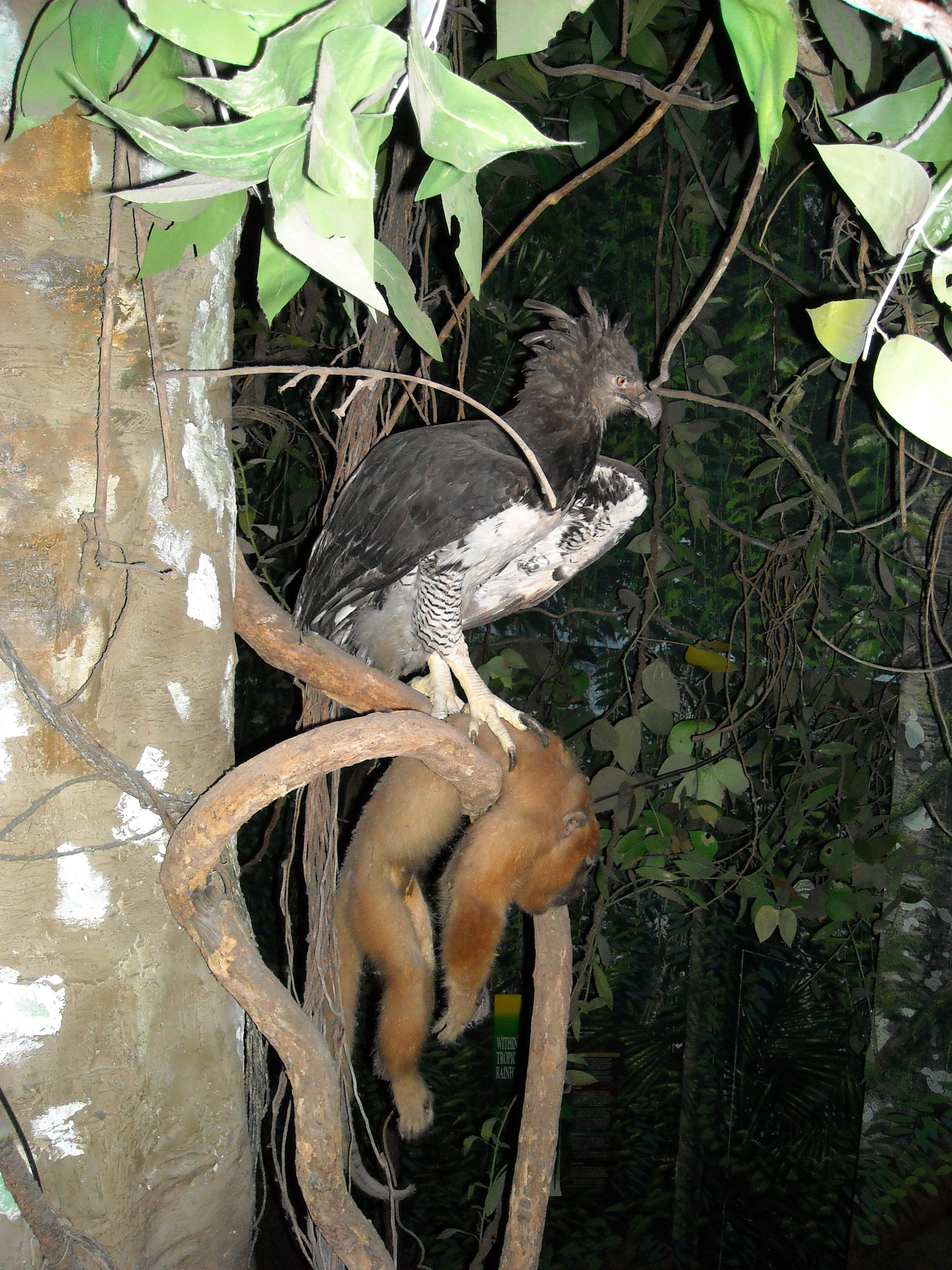Interactions: The Apex
The Harpy Eagle is not an animal that you would want to get into a fight with. This ferocious raptor is an apex predator in every domain it inhabits, and is said to have no naturally occurring predators (Schulenberg 2009). There recently has not been any predators of the Harpy Eagle until evidence of humans hunting these creatures in the Brazilian Amazonia started to surface (Trinca et al. 2007). With their amazing eyesight and relatively unmatched flying ability, the Harpy Eagle is able to swoop down from the tops of canopies and literally snatch any small to medium sized mammal. From here, the mammal is almost always taken back to the nest to be eaten. Some of the rain forest’s delicacies that the eagle enjoys most are two-toed sloths, three-toed sloths, and capuchin monkeys (Seymour et al. 2010).
To expand on its hunting capabilities, Harpy Eagles are
patient hunters. They usually have a perch on a
high branch of a tree where they can see openings in the canopy
below. They eyes of the Harpy Eagle have extremely large pupils,3 causing it have amazing vision
causing it have amazing vision
with little to no distortion in the
light that is brought through. To
go
along with its amazing sense
of
sight, the Harpy Eagle also has fantastic hearing. It is theorized
that it can differentiate between sounds of animals due to the
unique anatomy of the crest of its head. It has been studied that
every time a Harpy Eagle hears
the sound of an animal or human
it
raises the feathers on these crests. This may cause the eagle
to
have more sensitivity to sound (Piper 2007). The Harpy Eagle is also
said to be instinctual incredible at finding the vital organs of its
prey immediately to ensure a kill. I would not like to be on the
receiving end
of one of these swift attacks.
 The largest eagle in the world though does not just
The largest eagle in the world though does not just
hunt for
eating purposes. The Harpy Eagle has been
shown to be easily
agitated by any sort of
disturbance in its living environment, which
is one
of the reasons that it has not been thoroughly
observed and
studied. With this being said, the 5
inch long talons of the Harpy
Eagle are not to be
messed with (animaldiveristy.edu). This bird has
been known to pick up medium sized monkeys, that
have either disturbed their nest or threatened their
young, and take them to
extremely high heights
where they drop them to the forest floor.
Surprisingly this cruel death leads the Harpy Eagle
to play an
important role in controlling the
Capuchin monkey population. These monkeys are
known to eat eggs of fragile species populations.
The
killing of these monkeys for no apparent reason
by the Harpy Eagle
actually saves many other
species from extinction (animaldiversity.edu).
Sometimes it can seem like the Harpy Eagle
does not care about anything at all, but I’d like to think that this
is just a false front put on to stay at the top of the food chain.